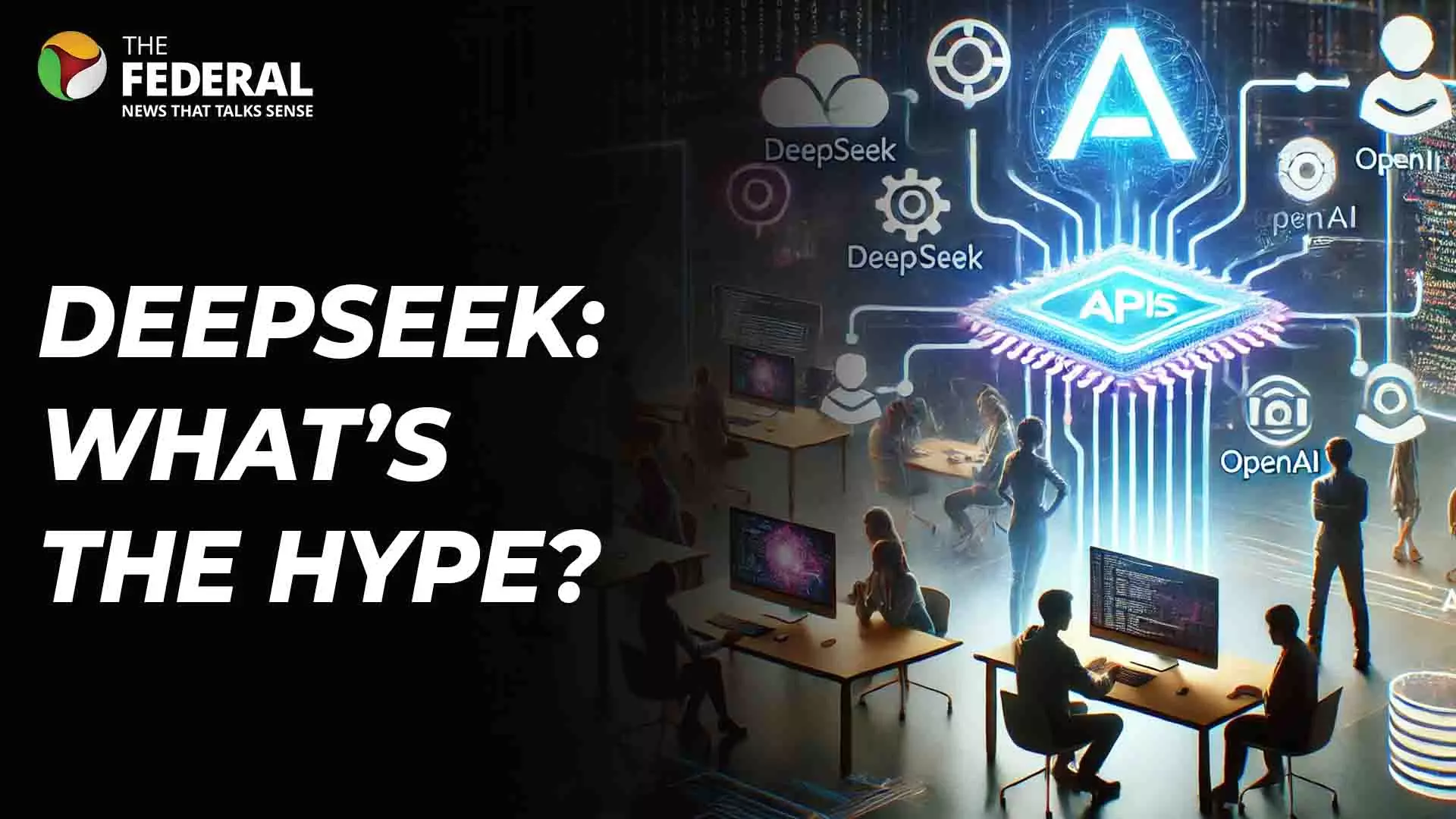
How China's DeepSeek is challenging AI giants like OpenAI, Google’s Gemini
DeepSeek created powerful AI models at a cost less than a fraction of what Google or Open AI has spent. What's more, their solutions turned out to be more effective

DeepSeek, China's answer to Artificial Intelligence (AI) in the west, is making waves across the globe with its ability to deliver high-performing AI solutions at a fraction of the cost incurred by US giants like Google and OpenAI. From creating games with just a few prompts to excelling in mathematical intelligence, DeepSeek’s capabilities are turning heads globally.
One of DeepSeek’s standout achievements is its efficiency. While companies like OpenAI spend billions to train advanced models, DeepSeek has developed equally competitive models at a significantly lower cost. For instance, its flagship model, DeepSeek R1, launched in January 2025, was built with just $6 million.
Also read: DeepSeek disrupts, Nvidia crumbles: Chinese AI start-up sparks $465B tech meltdown
What makes DeepSeek more effective?
Despite its modest origins, R1 rivals OpenAI in areas such as coding, general knowledge, and software solutions, and surpasses it in mathematical reasoning, boasting a 97 per cent success rate.
According to Ranjith Melarkode, founder of TheNeural, the secret lies in DeepSeek’s unique architecture.
“Some of the most advanced models today, like ChatGPT and Gemini, were trained on tens of millions of hours of GPU time,” he explains. “DeepSeek, on the other hand, uses a mixture of expert architecture. This design is not only resource-efficient for training but also highly cost-effective to deploy and use. It's 27 times cheaper compared to ChatGPT,” he adds.
Open source, mixture of experts approach
DeepSeek has further gone ahead with its counterparts by making its AI models open-source. This move allows developers worldwide to access, modify, and share these models.
DeepSeek’s success can be attributed to its innovative use of the “mixture of experts” approach. “When the human brain processes information, only a part of its vast neural network is activated to solve a problem,” Melarkode explains. “Similarly, DeepSeek models activate only specific parts of their network. In contrast, dense models like ChatGPT use their entire network for both training and inferencing, which is far less efficient,” he adds.
This targeted activation not only reduces resource consumption but also enhances the scalability and affordability of AI deployment, making high-quality AI accessible to more users and developers.
Also read: DeepSeek says it’s been hit by cyberattack, 'users unable to register'
Formidable challenger
Another key differentiator for DeepSeek is its pricing strategy. Developers integrating AI models into their applications typically pay for API usage based on tokens – chunks of text or data processed by the AI. DeepSeek’s token pricing is significantly lower than industry standards, democratising access to world-class AI capabilities.
“You can now build AI models at a fraction of the cost,” points out Melarkode. “This could shift geopolitical dynamics, enabling countries with limited resources but a strong talent pool, like India, to compete on a global scale,” he adds.
With its emphasis on affordability, efficiency, and open-source innovation, DeepSeek is positioning itself as a formidable challenger to the established AI giants.
The content above has been generated using a fine-tuned AI model. To ensure accuracy, quality, and editorial integrity, we employ a Human-In-The-Loop (HITL) process. While AI assists in creating the initial draft, our experienced editorial team carefully reviews, edits, and refines the content before publication. At The Federal, we combine the efficiency of AI with the expertise of human editors to deliver reliable and insightful journalism.

